The lady in green in her latest outfit looks hotter than ever. We stole her away from the ogling eyes for a feisty date, and then some. Here’s the raunchy story. Read on, sinners!
Images: Hanoz Patel
Hard as you might try, you would simply not be able to stop yourself from comparing the shiny, sexy new Ninja 300 with its predecessor, the Ninja250. The rule applies even more fiercely when you talk design and size. 50 cubic centimeters may not be too much volume to displace, but just once glance at the chiseled shape and grown up size of the new Kwacker you’d think of it as a machine from a few tiers above!
The little head-lamp, the chrome end-can, the analogue speedo – the Ninja 250 had its own wrinkles. The 300? Well, it’s in its pretty teens and it’s fresh out of the beauty salon. A relentlessly slashed surface, sculpted tank, angular, full front apron with those raw looking sharp openings for air passage – this thing deserves to have something more than a 300cc twin pot motor. It’s beguilingly big and potent looking. That sharp, aggressive styling may be too yesterday for some in favor of the oddball visual experiments that the people at Honda are carrying on these days, but I, for one, am sold. This thing makes me want to go to the race track, no saddle bag or pannier business here. No touring thoughts. ‘Just take me to the circuits and thrash me hard’ – she seems to plead, draped in her lime green hue, which she has made us believe is the new expression of lust. Visually, the Ninja 300 means serious peg scraping business right from the word go. Oh, and would someone throw that saree guard away for me, please? Thanks!
While Kawasaki collects full marks for the visual appeal, they score very highly on the counts of build quality and finish too. The Ninja 300 has to be one of the most immaculately put together machines we may have come across upto its price range. And guess what, we do know its stratospheric price. The quality of plastics is top notch, panel gaps are minimal, consistently so, and the materials used are absolutely fabulous. Those bar grips, oh, just hold them once in your palms, and you’ll realize why we’re showering so much praise on this machine’s build quality and materials. No creaks, no squeaks, no rattles – the Ninja 300 is built to global standards. The only chink in its Kevlar armor is its set of rear foot pegs. Neither do they look substantially built, nor bolted on half as well as the rest of the bike.
Just like the design of the rest of the bike, the instrument console is sparkly new too, with a digital-analogue combo for the speedo-tacho unit. Call me a relic, but I like my tachos with a real needle, swinging violently like its base is on fire when I rev it. Thanks for keeping it that way, Kawasaki. Knowing what a free-revving twin pod unit this engine is, it would have been a shame seeing those electronic bars fill up as the engine played its catchy dance dumber.
The digital part of the instrument cluster comprises fuel guage, speedo, clock, odo and trip meters. The big tacho unit draped in black, red and white is flanked by various tell tale lights including turn indicators, gear in neutral indicator, low oil and few other things.
Fire this baby up and you’d be saying hello to an extraordinarily enthusiastic, playful engine which begs you to thrash it as hard as you can. Exceptionally smooth all the way to its haughty 13k red-line, this twin-pot engine has Japan written all over it. This crackerjack of a powerplant was soon to astound us with its urgency and responsiveness on the move, but we got a good understanding of its ability while revving it at a standstill itself.
Smooth revving, with no reluctance whatsoever to be shown the limiter, the engine always has a wide smile on its face. Shove it, slap it, thrash it, punch it, stab it – you’d never see it making an irritable noise. As regards smoothness and revvy character, the Ninja 300’s straight-twin is a new benchmark upto its cubic capacity for the Indian market.
Jump on, and you’d realize that you’re sitting ‘in’ the bike not ‘on’ it. The familiar, friendly riding posture of the N250 is still very much there. Just a little hint of sportiness thrown in without causing any discomfort or inconvenience – the Ninja 300 greets you with a smile, some flowers and a welcome drink as you hop on. The handlebar falls naturally to hand, seating position in relatively upright, when compared to the CBR250R and even the foot pegs are not too far behind the knees. This baby won’t require you to train your arms, wrists and shoulders before you take out for long hours. Sporty looking the Ninja 300 may be, but it isn’t one bit uncomfortable.
On the move, you can almost instantly feel the improved mid-range grunt as compared with the relatively peaky 250. It still isn’t middle-heavy in trademark Honda fashion, but there decidedly is more juice there now. The improvement in low rpm torque is evident while riding around in city at traffic speeds. The flexibility of the mill is apparent from the fact that it pulled away cleanly in the 6th cog from 40kmph without any stutter or splutter. Pottering around at around 3-4k rpm in higher gears should not be an issue at all.
Acceleration from a standstill is mighty impressive. The Ninja 300 hits the ton real fast – with a light rider and the right launch, hitting a ton in less than seven seconds should not be a problem. We got an irrefutable evidence of the Ninja300’s blitzy acceleration at Lavasa twisties, where we saw ourselves cracking the throttle open and hitting a ton on some short straights. On one of the straights, (still short by highway standards) bang in the middle of the valley, we registered 138km/h on the clock. Given a long straight, the claimed 160+ km/h shouldn’t ask for too long a piece of tar, as Deepak had observed first hand in our quick review.
The technicalities have all been very well sorted. There is no knocking sound from the engine whatsoever. Throttle response is crisp. Crack open the throttle and the Ninja 300 builds power in a clean, laser-cut manner. No spikes, no flat spots, just vibe-free, resistance free performance which increases as the rev needle climbs up the tacho. The juiciest part of the power band is beyond 6000 rpm after which there is no stopping those twins all the way to the tall red-line of 13,000rpm and beyond, until the electronic guardians walk in to shush them.
Over the 250R, the Ninja 300’s motor boasts enhancements which have led to a lighter construction, helping keep the weight of the bike low even with a bigger engine. As a result the Ninja 300 weighs 172 kg, which is the same as the Ninja 250R. The 300’s engine employs a new crankcase, lighter pistons and a revised cylinder head for the gains. The sleeveless cylinders are made of die-cast aluminium.
The Ninja 300’s engine capacity gain has been attained by increasing the 250’s stroke length by about 8mm. A longer stroke means better torque, and the fact has helped the low-and mid-range tractability of the machine positively. For those interested in numbers, peak power output stands at 39PS at 11,000 rpm while peak torque is rated at 27NM at 10,000 rpm.
The 6-speed gearbox provides a great match to the exceptional engine. Precise and light to operate, the gearbox delivers great feedback too. Shifts happen with audible, well defined clicks, but never translate into irritating clanks or stuck cogs. Ratios are well sorted to offer equally good performance on the limit and while commuting through the city. The engine-gearbox combo is a benchmark which manufacturers, especially the Indian ones should look forward to achieving. Stellar job!
Next on our review crosshairs is the first ever slipper clutch on a bike from this category and segment. Our big question – is it required? Our answer – definitely not, when ABS has been omitted. For the uninitiated, slipper clutch is an on-the-limit tech which cuts in when the rear wheel tends to overpower the engine, making the rubber dig its fangs in the road for traction, sending the tacho in a tizzy and in some cases, making your bike’s tail go wagging. Moments before this happens, presence of slipper clutch means a release in the bite of the clutch, bringing the revs down, saving the engine, and you as well, in some cases.
Racers accustomed to the tech find it helpful in taking sharper corners more smoothly. It takes getting some used to, but with regular use, one can arguably make good use of the feature in the real world too. However, as we mentioned before, it isn’t really a great idea to skip ABS which is a safety oriented tech in favor of the slipper clutch which is considered a more exotic feature. Sure it does prevent the tail from wiggling around when you’ve goofed up on brakes and revs together, but incidents of goofing up on brakes alone are far more common. Moreover, most (heck, all) of us are used to rev-matching and using engine braking to find that additional traction. We are, in principal, agreeable to the introduction of the new technology, but why this more exotic bit takes precedence over ABS is beyond us.
The tubular diamond frame along with the twin fork front and gas charged mono-rear suspension on the Ninja 300 offers a solid, sure-footed ride on the run. While it’s absolutely unshakeable in the straight line, the Ninja 300 exhibits its own unique character during corner carving. Generally above average around bends, this baby does show some reluctance in turning in. Calling for a fair bit of weight transfer and lean-ins on the limit, the Ninja300 isn’t really a learner’s delight. For reference’s sake, the R15 comes across as much more obedient around a set of challenging corners. Not that it would put a wrong foot forward, the Ninja 300 really feels much more manageable when you dial in a more pronounced counter steering input. It’s not as easily flickable as the smaller R15 by any measure though. While we cannot put a finger on why it’s so, the extra weight and power cannot be blamed here, as we have ridden machines with more power and weight which feel lighter to lift and dip mid-corner.
Bringing the focus onto brakes, the first word that comes to mind is ‘adequate’. Reined in by 290mm petals up front and 220mm petals at the rear, the 300 has satisfactory stopping power, but doesn’t quite dazzle you when it drops the anchors. The sharpness that we anticipated looking at the size of those discs isn’t quite there. The Ninja would feel more controllable with some more bite where the rubber meets the road, and some more feel at the lever. Since the tyres are an integral part of the overall braking feel, the IRC shod Ninja is just about OK. A softer compound rubber and sharper feel from the brakes is desirable from this class of motorcycles.
We probably don’t even have to utter out you what the biggest problem with the Ninja is. At 3.5 lakh ex-showroom, the N300 is one expensive piece of metal to own. To be honest, we’re smitten with it as a product, and would love to give this Kwacker a smacker for its build quality, it’s absolutely intoxicating engine, gorgeous looks, characteristic handling, and much as we hate to say it, the slipper clutch as a technology showcase. Sure, we would have preferred an ABS instead, but what the hell, the damned race-tech is still there, and we’ll have to eventually give credit where due.
Without any shade of doubt, the Ninja 300 is head and shoulders above any other bike upto 300cc. Anyone who thinks that the CBR250R is comparable in any sense is gravely mistaken. There were some parallels until the Ninja250R prevailed, but the 300 has taken the game a whole tier higher. It’s an exceptional product in its class, marred by a high sticker price.
So ladies and gentlemen, boys and girls, here’s how we would like to sum our verdict up
If your daddy is rich,
Or if a little fortune you managed to snitch,
Bring home that pretty green b***h,
For more compelling than two wheels there’s hardly ever an itch!
And for those who are broke,
May we suggest,
Go for one less cylinder,
And a longer stroke
PS: Heartfelt thanks to Arjun Dharve, Hanoz Patel and Yatharth Chauhan for their valuable inputs
A few observations
The 290mm front discs look substantial, but could have done with a bit more bite.
The shorter dual tone silver black end-can looks contemporary, much better than the 250R’s long and shiny exhaust. Sounds better too!
The IRC rubber in the Kwacker provides just about adequate grip. Softer, grippier rubber would be welcome
Just look at that chiseled tank. Why would not one fall in love!
Bar grips are exceptional quality, so are the plastics used for the switchgear. Workmanship and materials used are absolutely top-notch
Front blinkers are integrated in the apron unlike the 250, which had protruding units
Slim looking tail unit with sporty rear fender.
RVMs are foldable, and slot into folded position with a reassuring click, speaking tons about the quality
Single speaker horn with the massive radiator in the backdrop.
Headlights don’t impress. Following western norms, the right headlight is always on. Low beam is acceptable, high beam could have done with better spread and intensity
Kawasaki patented Bottom-Link Uni-Trak mono suspension at the rear is 5-speed adjustable. Even on the second softest setting, we found it reasonably stiff. Not a bad thing for a sporty machine like this.
Tech Specs
| Engine | Liquid-cooled, 4-stroke Parallel Twin |
| Displacement | 296 cc |
| Max Power | 39 PS @ 11,000 rpm |
| Torque | 27.0 NM @ 10,000 rpm |
| Bore X Stroke | 62.0 x 49.0 mm |
| Compression Ratio | 10.6:1 |
| Fuel System | Fuel injection: ø32 mm x 2 (Keihin),with dual throttle valves |
| Fuel Type / Minimum Octane Rating | Unleaded petrol / RON 91 |
| Ignition | Digital |
| Transmission | 6-speed, Return |
| Final Drive | Sealed chain |
| Cooling System | Liquid Cooled |
| Frame Type | Tube diamond, steel |
| Rake / Trail | 27 / 93 mm |
| Front Tyre | Size 110/ 70-17 M/C (54W) |
| Rear Tyre | Size 140 / 70 – 17 M / C (66S) |
| Wheelbase | 1405 mm |
| Ground Clearance | 140 mm |
| Front Suspension / Wheel Travel | 37 mm Telescopic Fork |
| Rear Suspension / Wheel Travel | Bottom-Link Uni-Trak with gas-charged shock and 5-way adjustable preload |
| Front Brakes | Single 290 mm petal disc with single balanced actuation dual-piston |
| Rear Brakes | Single 220 mm petal disc with Dual-piston |
| Fuel Capacity | 17 Litres |
| Seat Height | 785 mm |
| Kerb Weight | 172 kg |
| Overall Dimensions L x W x H |
2,015 mm x 715 mm x 1110 |
Image gallery

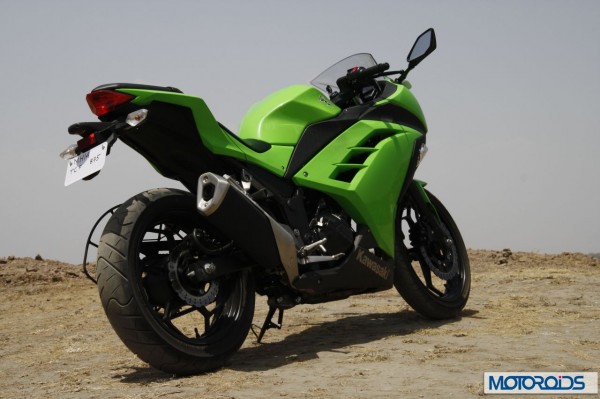
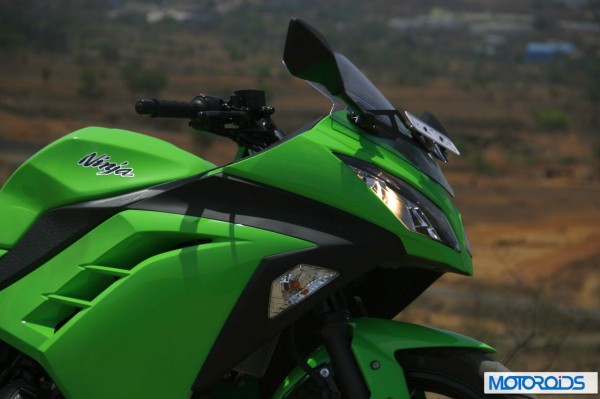
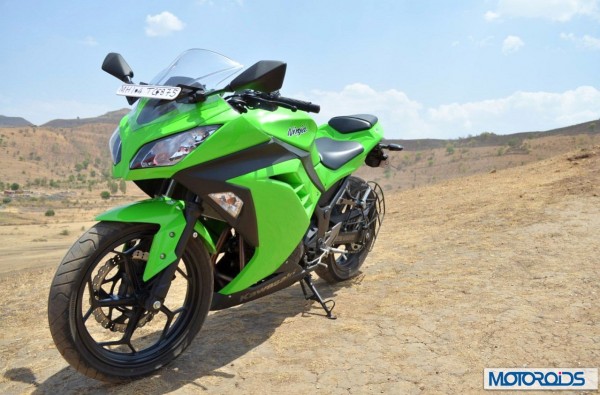
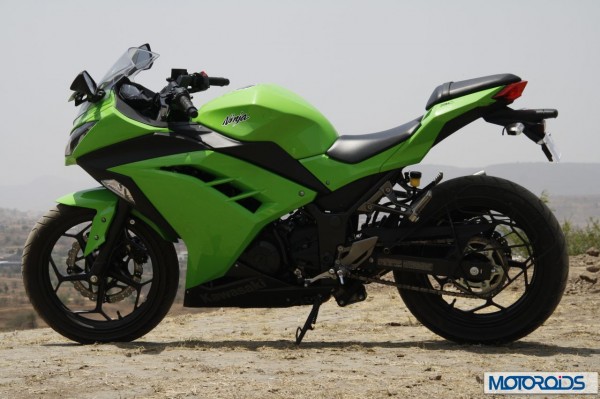
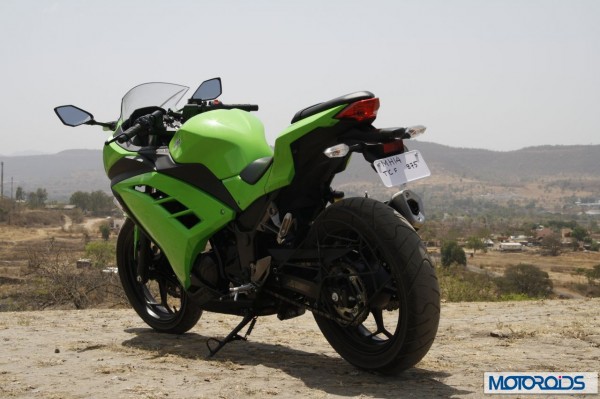
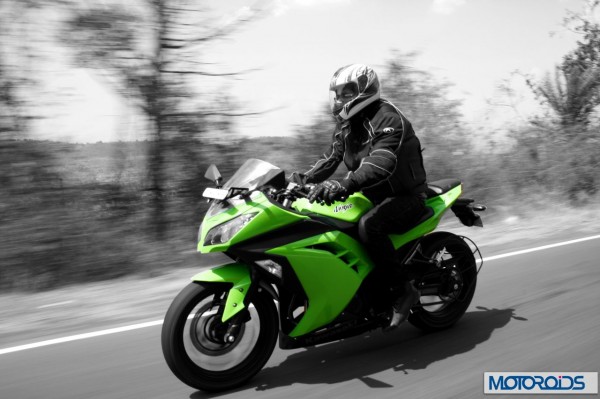
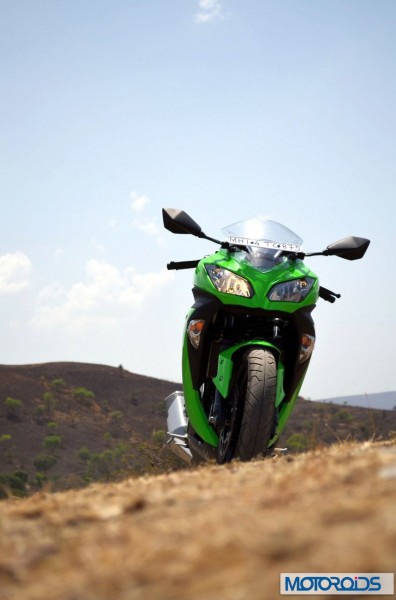
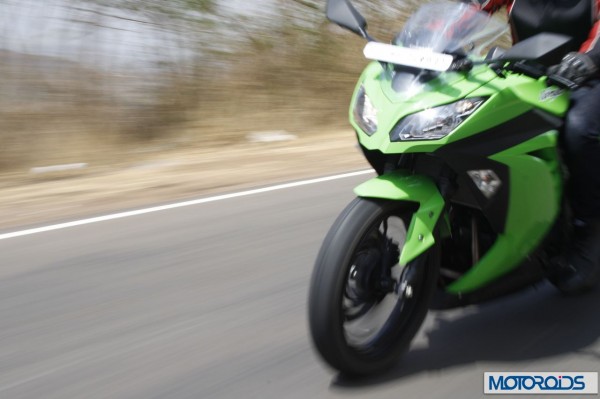
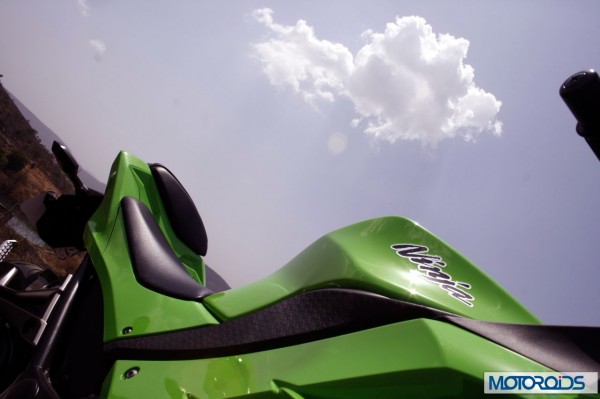
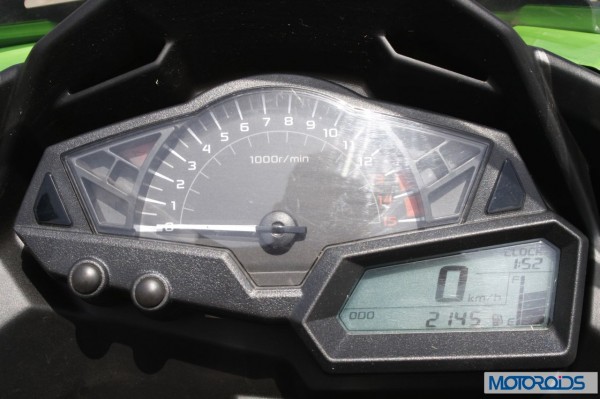
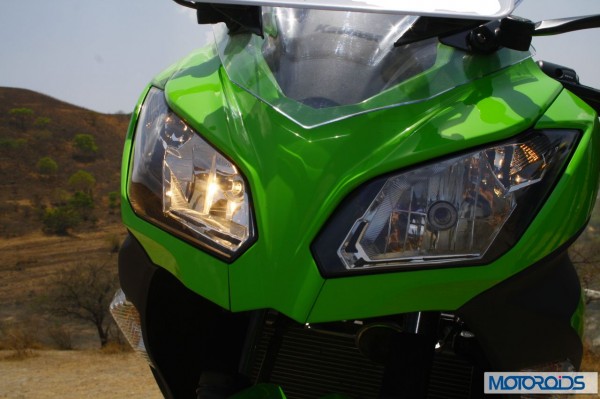
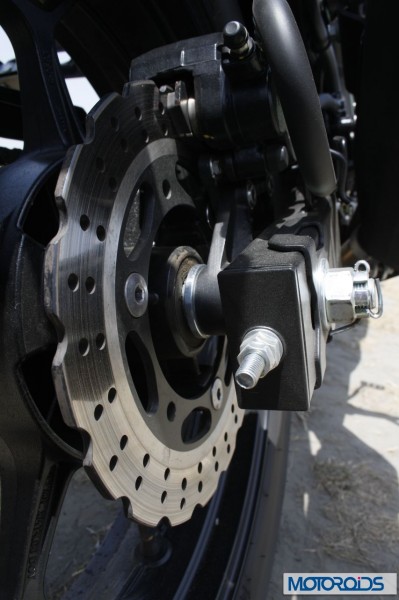
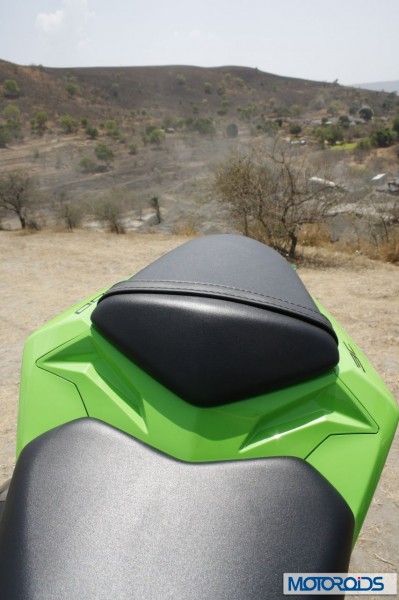
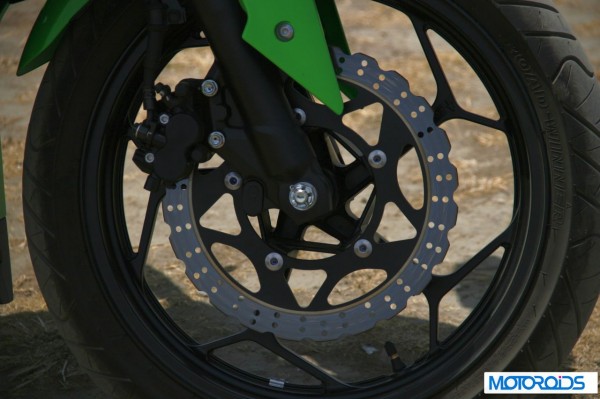
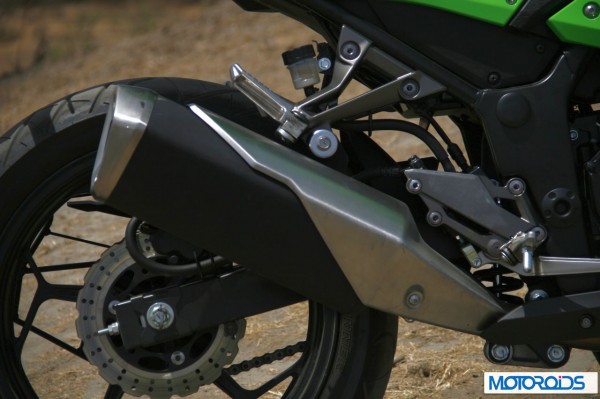
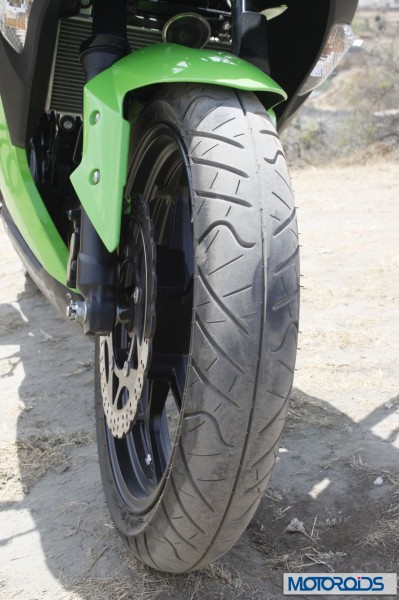
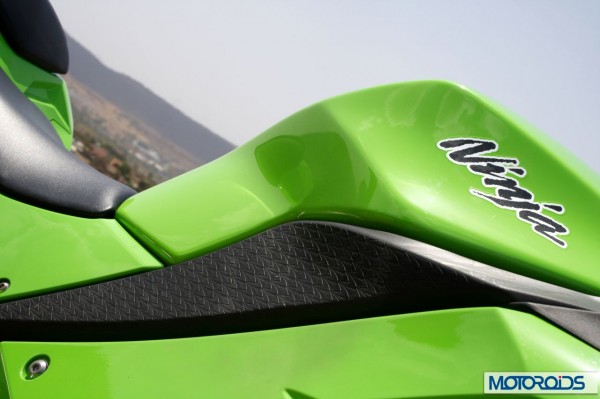
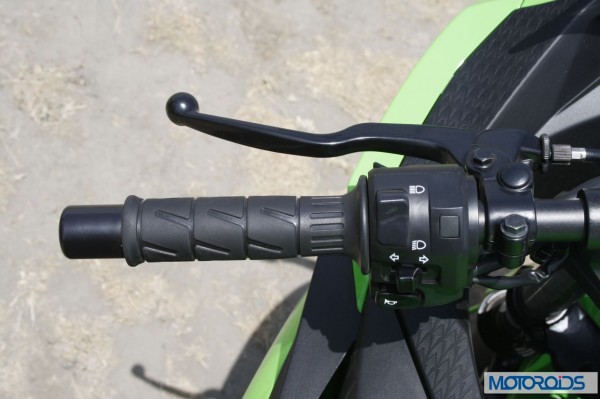
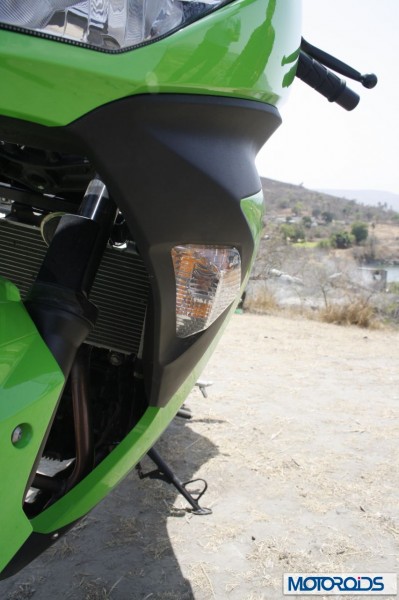
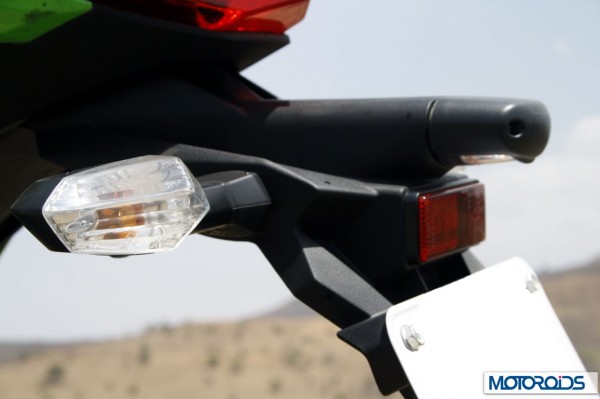
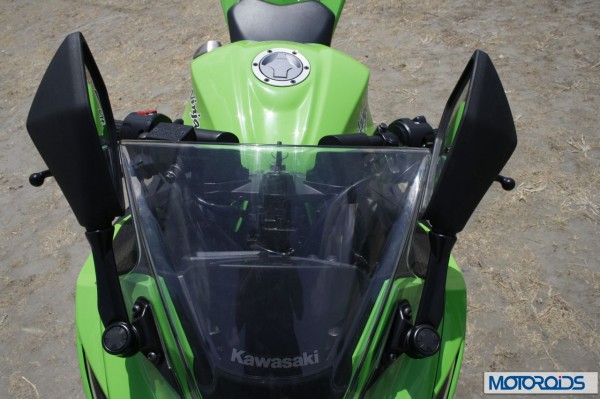
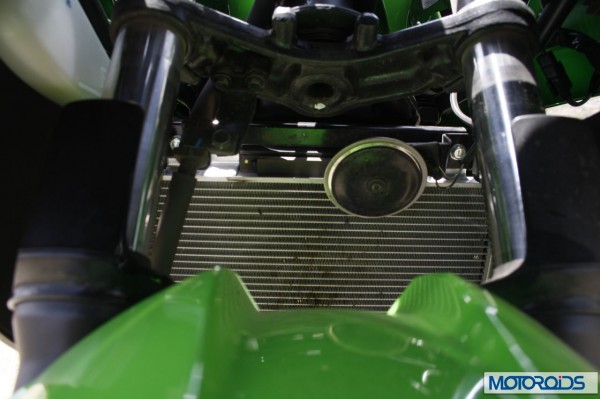
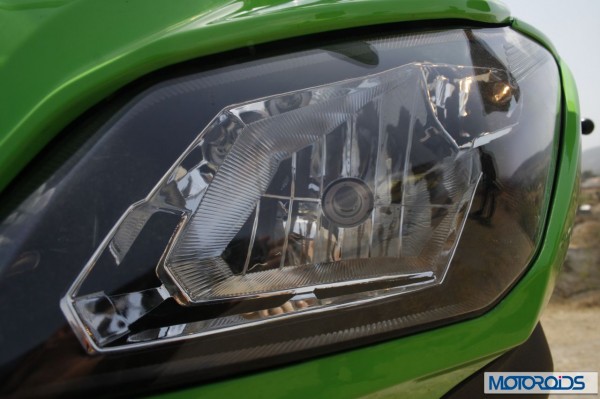
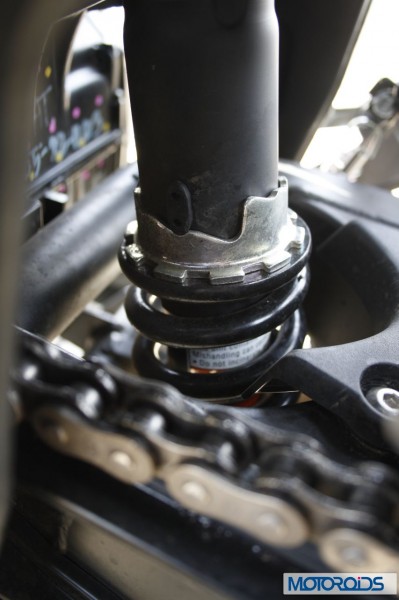
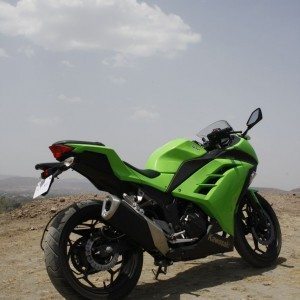
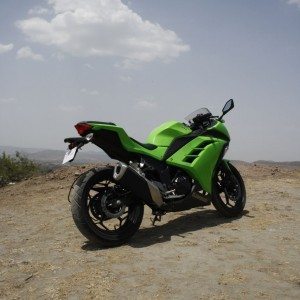
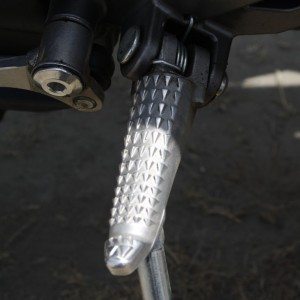
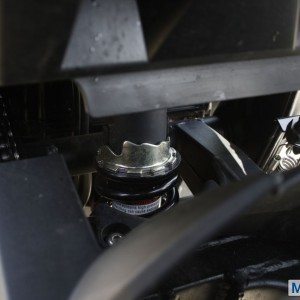
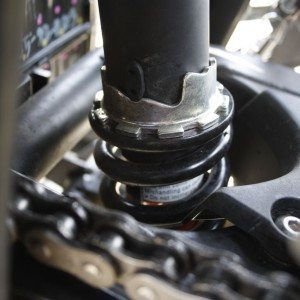
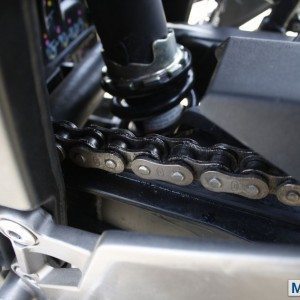
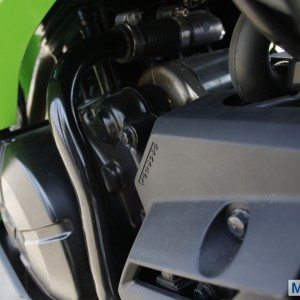
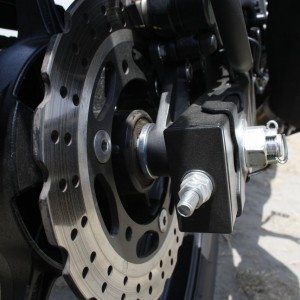
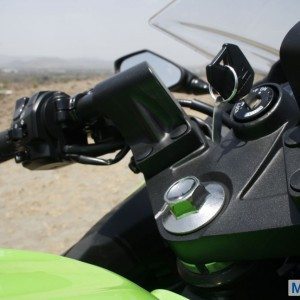
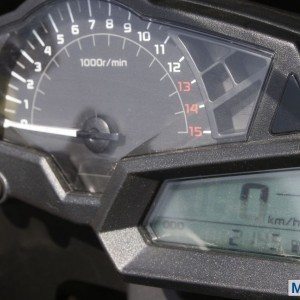

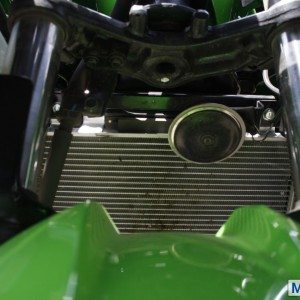
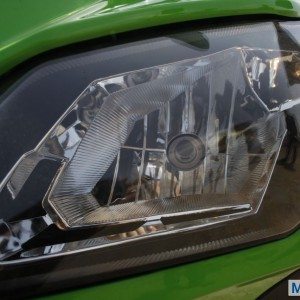
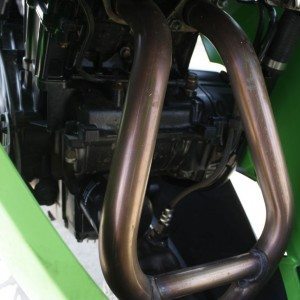
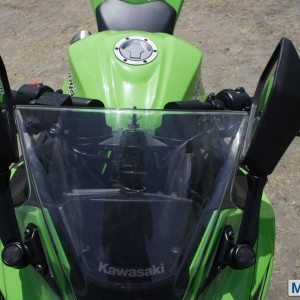
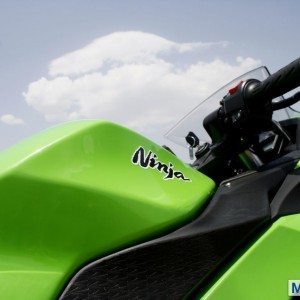
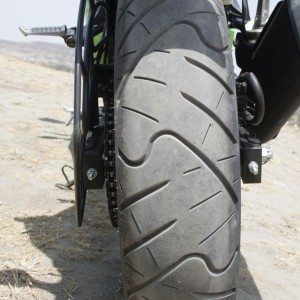
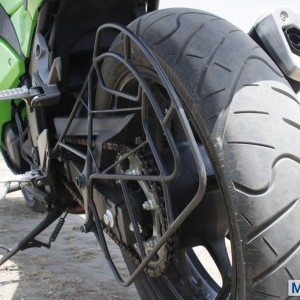

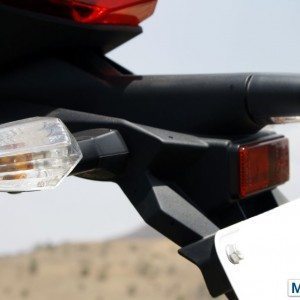

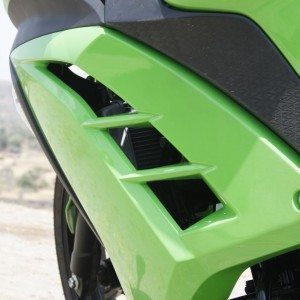

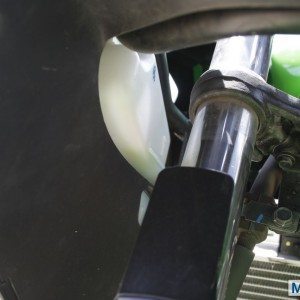
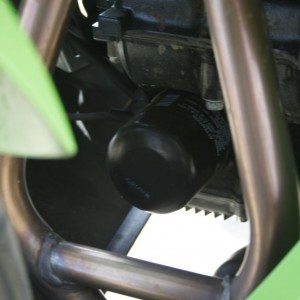
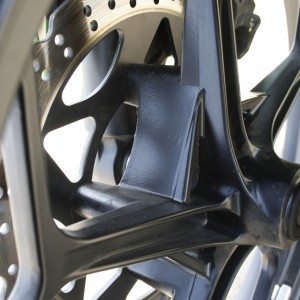
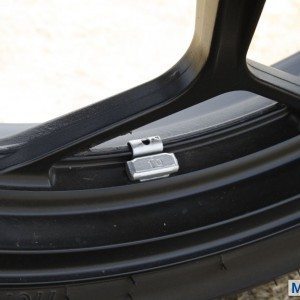
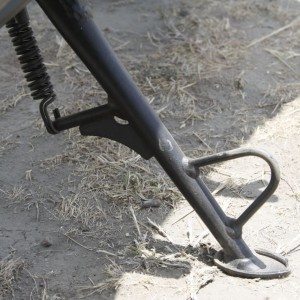
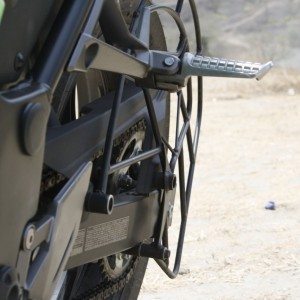

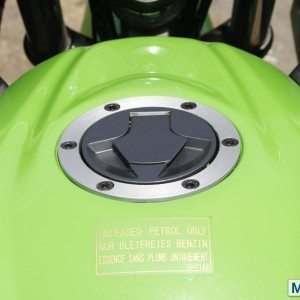
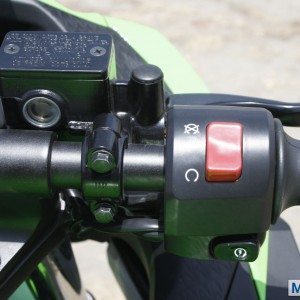
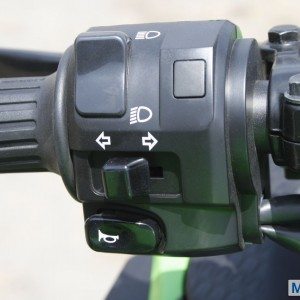
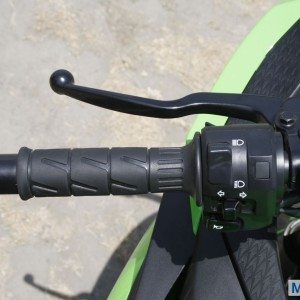
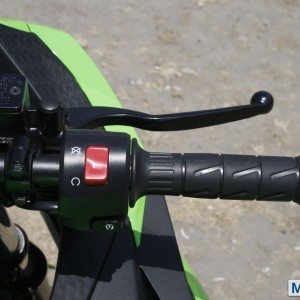
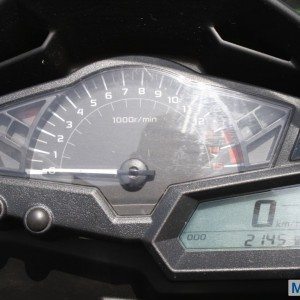
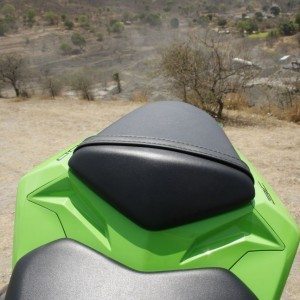
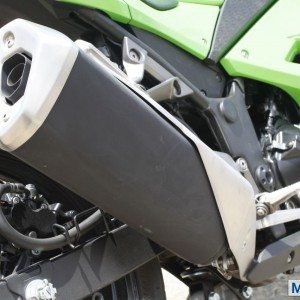
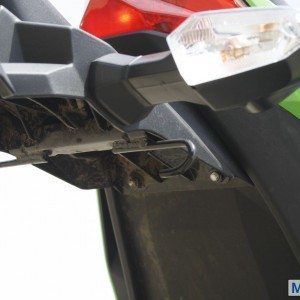
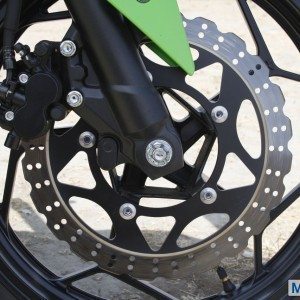
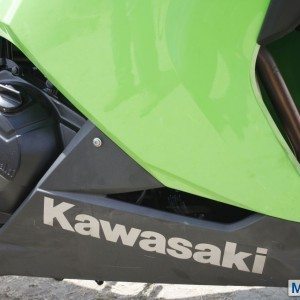
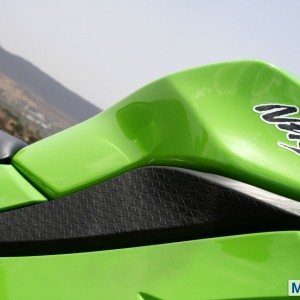

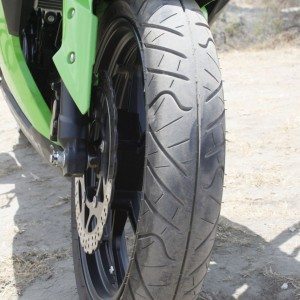
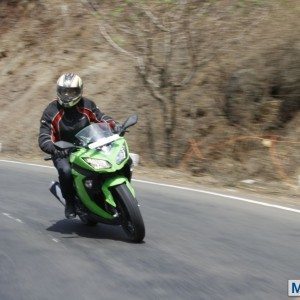
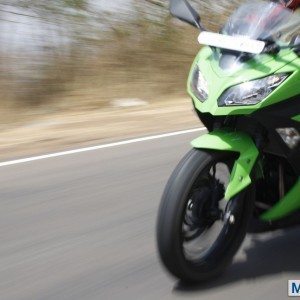
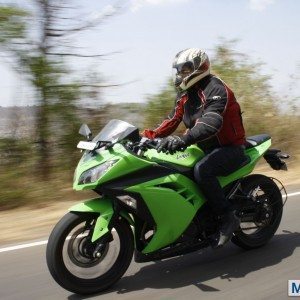
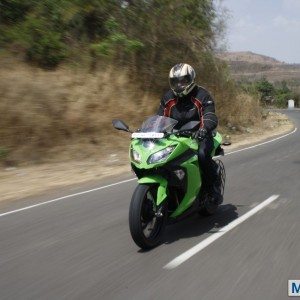
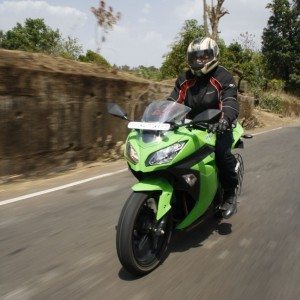
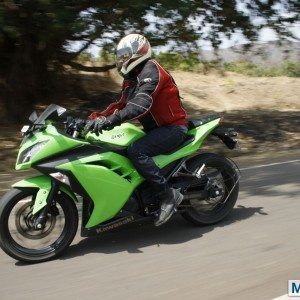
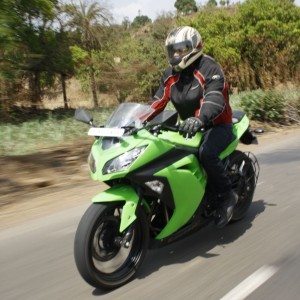
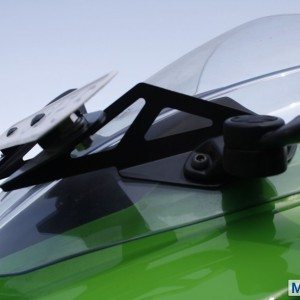


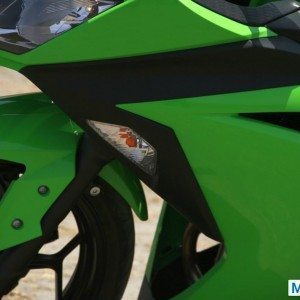

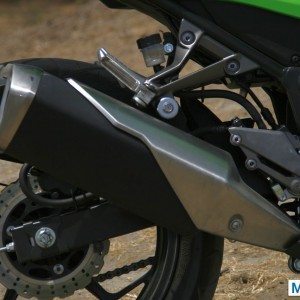
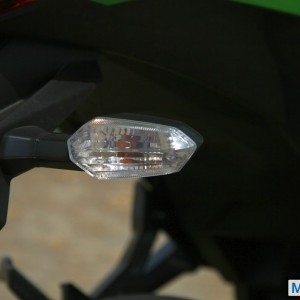
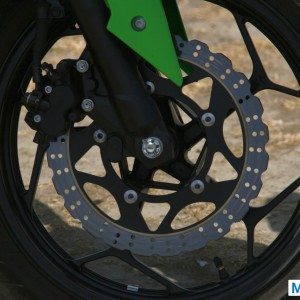
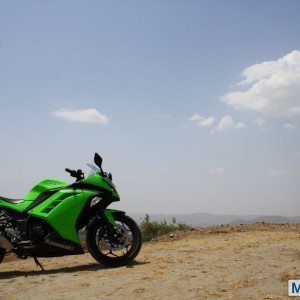
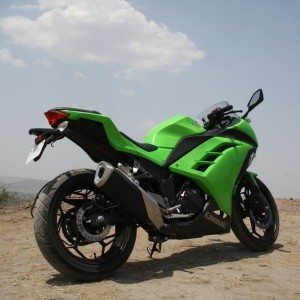
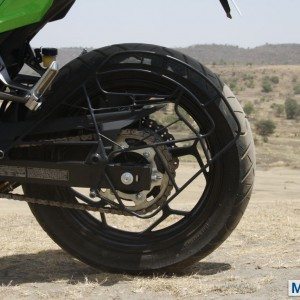
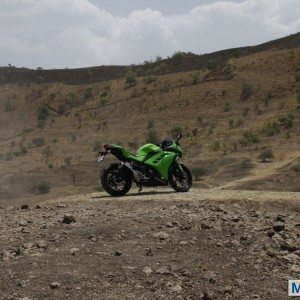
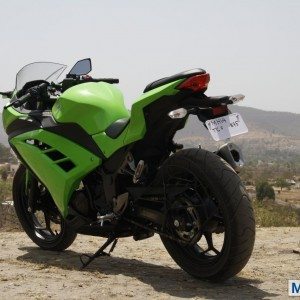
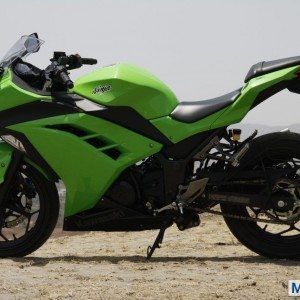
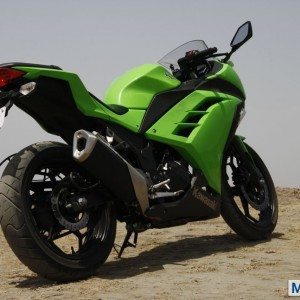
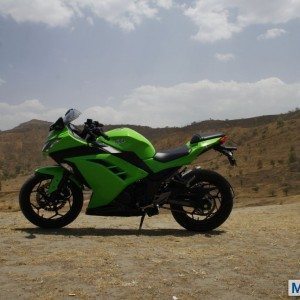





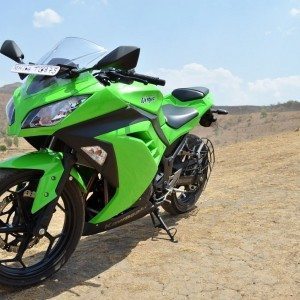
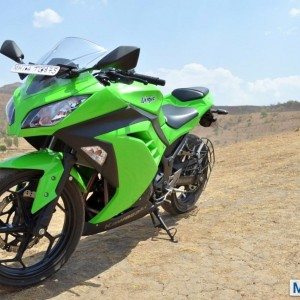

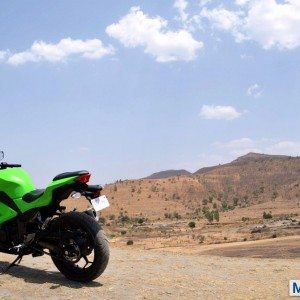

Pictures are good but the review looks like it was written by a school kid.
One Cracker Kwacker review! I was expecting a special one for an equally special bike, and you’ve not disappointed.
Fabulously well written! Kudos to you and the all the riders (Arjun, Hanoz, Yatarth) who were there. Having different set of riders does help to disclose a lot many things, which one rider alone fails to see.
Hell, am reading it once again 😉